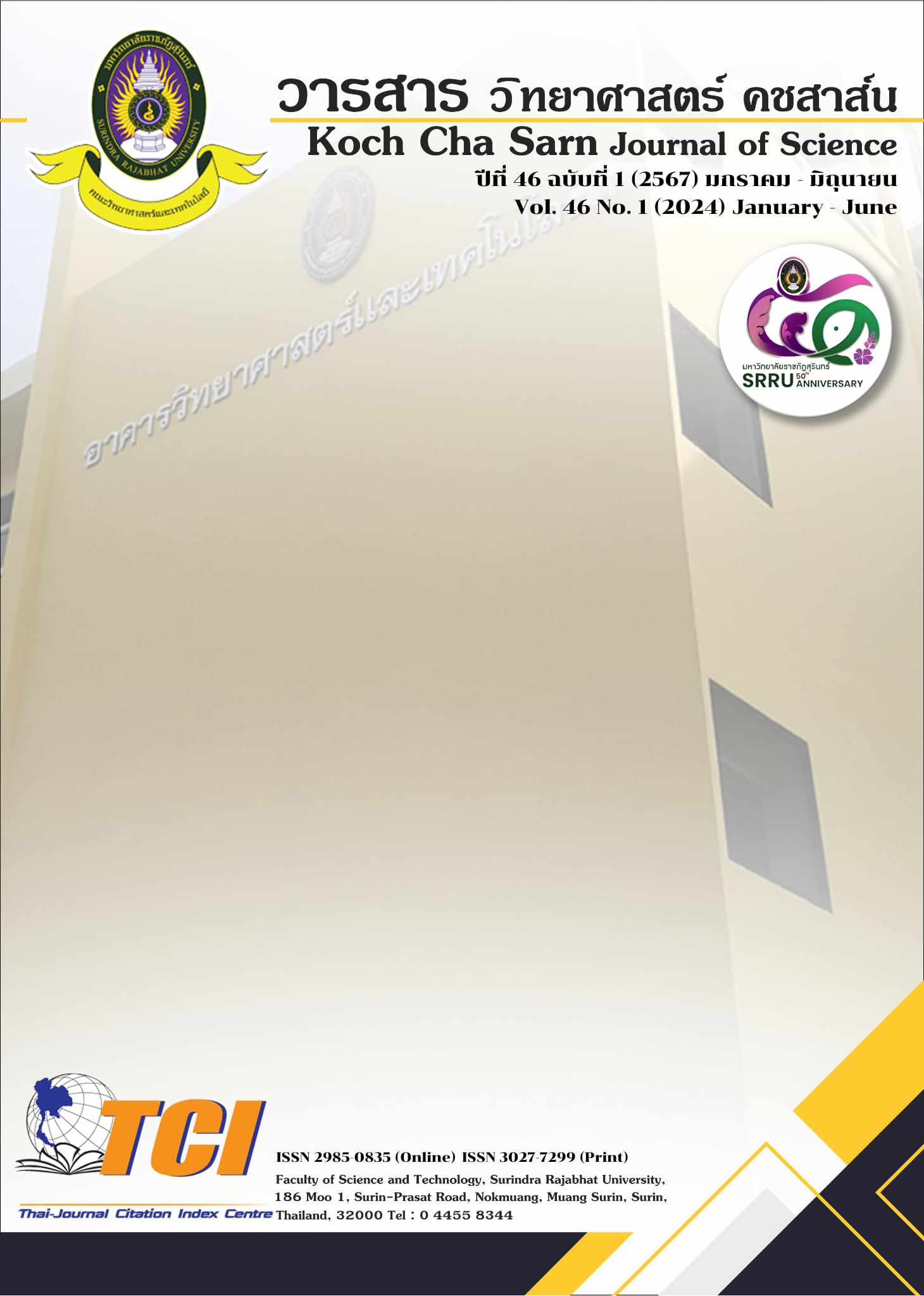Physical and Microbiological Quality of Drinking Water from Water Dispensers at Schools in Bang Sai Sub-district and Sirindhorn College of Public Health Chonburi
DOI:
https://doi.org/10.14456/kcsj.2024.3Keywords:
drinking water quality, school water dispenser, total coliform, fecal coliform, EscherichiaAbstract
Water is a vital factor for human life for both water supplies and drinking water. Drinking water must be free from pathogens and toxic contaminants. Drinking water in schools and educational institutions is a basic service for students that the institutions must sufficiently provide both quantity and quality according to drinking water standard criteria consisting of 3 aspects: physical, chemical, and biological. This study aimed to examine the physical and biological drinking water quality toward Total coliform, Fecal coliform and Escherichia coli (E. coli) among all drinking water dispensers, 21 samples, from schools located in Bang Sai sub-district and Sirindhorn College of Public Health, Chonburi. Water samples were collected from 7 water dispensers in the schools and 14 water dispensers in the college. Data were analyzed by using descriptive statistics. The results showed that physical quality in all samples were clean, odorless, pH value between 6.73 and 8.65, turbidity between 0.2 and 1.6 NTU, and electrical conductivity between 173.8 and 390 mg/L. In terms of biological quality, Total coliform contamination was < 1.1 – 26 MPN per 100 mL, Fecal coliform contamination was < 1.1 MPN per 100 mL, and E. coli contamination was not detected in all samples. However, it was found that 16 water samples (76.19%) met the standard criteria, the pH value met the standard criteria in 19 samples (90.48%), the turbidity level was in the acceptable range, and electrical conductivity met the standard in a good quality. To prevent contamination by Total coliform, Fecal coliform, and E. coli, it should address strategies to reduce the risk of water-borne diseases by surveillance, monitoring the quality of drinking water before entering to water dispensers, capability of water filter, filter change period, sanitation of drinking water according to the standard, and evaluation the quality of drinking water from drinking water dispensers in educational institutions in other aspects. Moreover, maintaining environmental aspects surrounding the water dispensers should be managed appropriately.
Downloads
References
Department of Health. Notification of Department of Health on Standard of Drinking Water Quality.Nonthaburi: Ministry of Public Health; 2020.
Ninwong B, Mohsani S, Doloh A. Method Development for Determination of Heavy Metals in Drinking Water of Schools in Nakhon Si Thammarat by Paper-Based Microfluidic Devices. Wichcha Journal 2016;35(1):1-12.
Asa P, Chotigawin R, Suwannahong K, Pibanwong M. Situation Quality of Drinking Water in Primary Schools, Chonburi Province. KKU Research Journal (Graduate Studies) 2021;21(4):222-232.
Wasana HM, Perera GD, Gunawardena PDS, Fernando PS, Bandara J. WHO water quality standards Vs Synergic effect (s) of fluoride, heavy metals and hardness in drinking water on kidney tissues. Scientific Reports 2017;7(1):1-6.
Akram S, Rehman F. Hardness in drinking-water, its sources, its effects on humans and its household treatment. Chem Applications Journal 2018;4(1):01-04.
Nanna H. Epidemiology Surveillance Report Region 6. Chonburi: Office of disease prevention and control 6 Chonburi;2020 [cited 2022 Aug 30] Available from: https://ddc.moph.go.th/uploads/files/1692620210205105950.pdf
Chonburi Provincial Public Health Office. Diarrhea morbidity rate per 100,000 population [Internet]. Chonburi: Chonburi Provincial Public Health Office;2022 [cited 2022 Aug 25]. Available from: https://cbi.hdc.moph.go.th/hdc/main/index.php
Chitpirom K. Laboratory examination in public health. Bangkok: Chulalongkorn University Press; 2014.
Blodgett R. BAM Appendix 2: Most Probable Number from Serial Dilutions. FDA. [cited 2020 October 9). Available from: https://www.fda.gov/food/laboratory-methods-food/bam-appendix-2-most-probable-number-serial-dilutions
Yamasamit N. Quantitative microbial risk assessment of total coliform and fecal coliform in drinking water from public drinking water service around Thammasat University, Rangsit Campus. [Master of Engineering]. Pathumtani: Thammasat University; 2018.
Ravadchai N, Wongwarissara P, Tipsantia D, Legkhoksung S, Sukpudsa O, Noinarin P. Water quality and sanitation of drinking water dispensers of secondary school in Mueang District, Nakhon Ratchasima Province. UBRU Journal for Public Health Research 2021;10(2):128–137.
Kulladarom R, Maiprasert M. Quality of Drinking Water in Elementary Schools in Ladkrabang, Khlong Sam Wa and Nong Chok Districts in Bangkok. Suthiparithat Journal 2020;34(111):126-134.
Yolao A, Sabangban B, Yolao W. The safety situation of water consumption from water filters at the Sirindhorn College of Public Health, Khon Kaen. Thai Dental Nurse Journal 2021;32(2):146-154.






